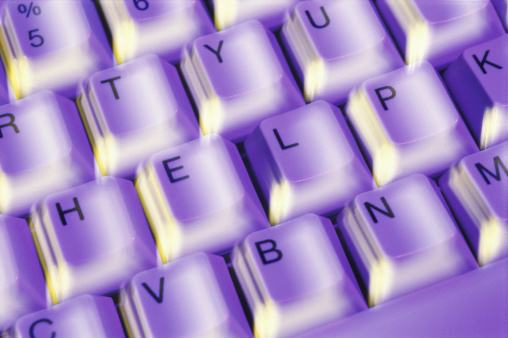This content has been archived. It may no longer be relevant
Don’t get us wrong—we love technology. Technological advances can make things easier, faster, and more productive. Just imagine a world where we did not use laptops at work, or where Wi-Fi was not readily available almost anywhere we went, and think of a life without social media! But as we all know, things can sometimes go sour in our world of cybernetic convenience. And the disadvantages of machine translation highlight a key area where digital reality can fail to live up to expectations.
But for the moment, let’s return to the broader topic. Technological innovations have allowed us to change the way in which we work, to increase productivity, and complete tasks with heightened precision and accuracy. We are also able to work in a global economy and connect with people (whether for work, school, or social calls) all over the world.
On the other hand, all of our gadgets and devices can make us lazy. As a society, we no longer want to wait more than a couple of minutes for anything. Plus, the younger generations are used to constant news streams and feeds, by which they are often distracted.
While there is good and bad to everything, especially technology, in the translation industry we feel that most “easy interpretations” and translation apps are not advertising themselves fairly.
Some might believe that machines are taking the place of human translators, and this is far from the case. The translation of websites, marketing campaigns, legal documents, and medical forms is a complex, strenuous process.
So, as you can imagine, as professionals, we cringe when we see businesses or companies using incorrect, confusing translations that likely came from a word-for-word translation tool.
What Translation Really Means
Thanks to fast, word-for-word translations, people believe that translating should be free and simple. And, because these tools do not look at the greater context of what they translate, people often assume a translation will come with mistakes. This is certainly one of the key disadvantages of machine translation.
While mainstream online tools and apps have put the translation industry on society’s radar, translation is now often viewed through an incorrect lens.
Professional translators work with extreme attention to detail to transfer the full meaning of a text in one language to another. This is a complex process that takes time. The translator has to not only understand what the original text is saying, but convert it to another language, using his or her background in cultural knowledge, legal, or business-specific comprehension and experience.
Whew, talk about a daunting task! However, this is what it takes to deliver quality, accurate translations of your important text and documents.
That is the main difference between the two. Translators work to bring you quality, while translation apps or databases work to bring you something quickly.
The Problem with Fast Translations
So, what’s wrong with quick? While there are certain times when a fast and semi-accurate translation will be sufficient, in the medical, education, legal, and business world, “sufficient” will not do. And unfortunately, one of the serious disadvantages of machine translation is that it can only be merely sufficient for getting the gist of what something means.
If you are a professional and need materials to reach clients, patients, and other business associates, you want something people will understand. Unlike professional translators, translation apps do not look at the greater context of what is being said. So you might get something that cannot be comprehended by your audience or, even worse, something that is offensive. You do not need us to tell you that, if this happens, at best your customers are distracted and, at worst, they will consider another service or your deal will fall through.
There Is a Time and Place for Everything
Now, we are not saying that these apps and tools are useless! We just know that there is a time and place to use them. For quick interpretation needs, say, while traveling, pulling out your smartphone to decode a menu item is a great option to have.
Tourists often confuse street sign meanings, building names, and food items, and quick translation apps are faster and lighter than lugging around a French-to-English dictionary.
Another prime time to use these apps? Say you are exploring Tokyo, but seem to have lost your way. As long as you have your smartphone, just flag down the nearest friendly face and use an app to interpret for you both, and you should be well on your way.
In this sense, fast and easy technological innovations do help. But, when you want to translate materials and documents for your company, you need to lean on the professional services of a translation company.
A professional translator will ensure that your paperwork is accurate so you can conduct your business on a global market. For these instances, you do not want to take the fast or easy fix. Often that results in a poor translation that will drive clients away, lose you money, and even tarnish your reputation.
Let the apps and translation tools help you when traveling, but for translation of legal or business documents, stick to a professional service.
Consider a Partnership with TrueLanguage
Are you looking for a partnership with a language service provider? If so, you may wish to consider TrueLanguage. We offer ISO-certified state-of-the-art business translation services that are on budget, on time, and to the exact specification. Every time. Or perhaps you’re just looking for a cost-free, no-obligation estimate for your next translation project. Either way, we’d love to hear from you!


